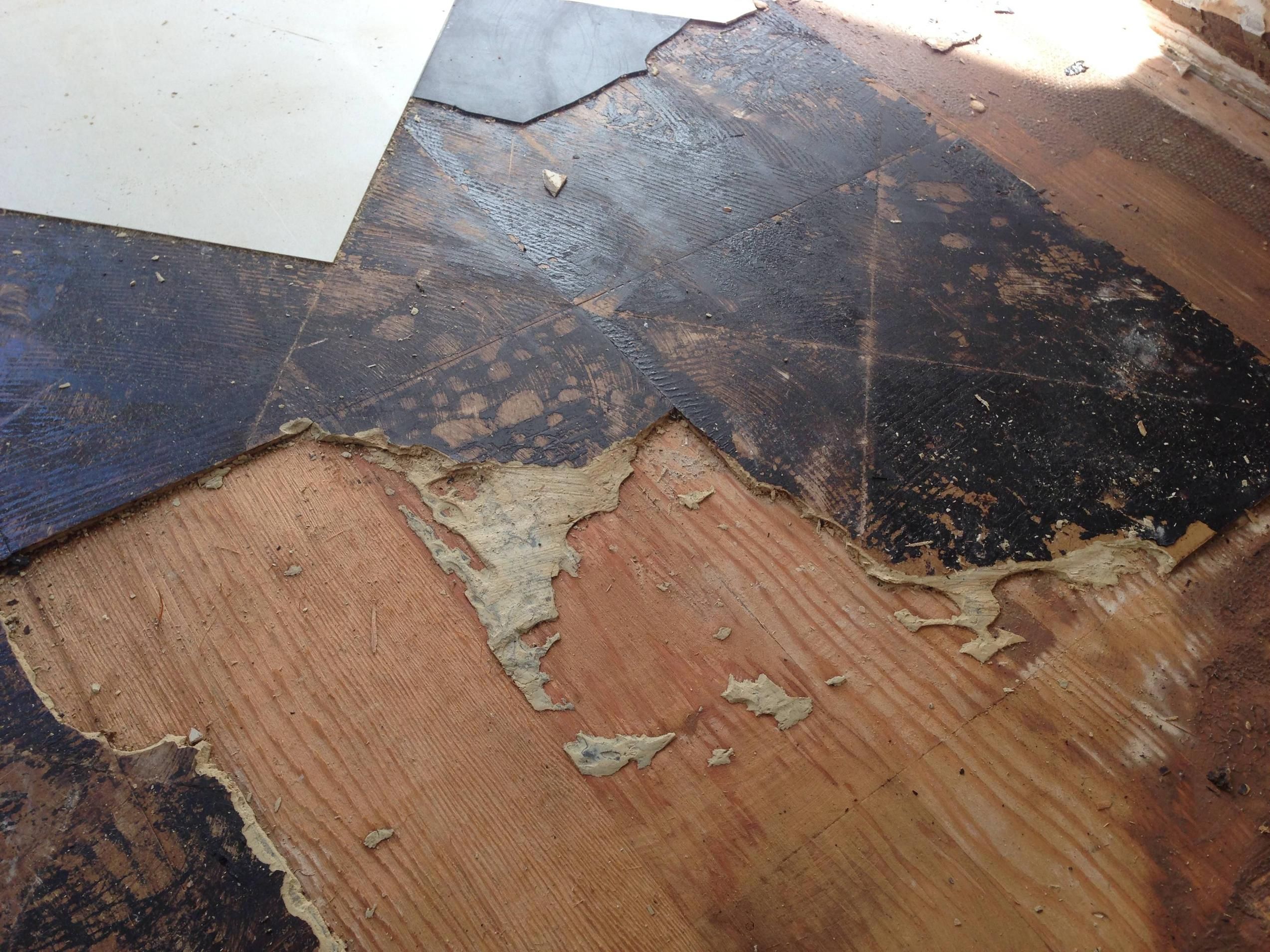Working on removing black mastic which once likely held down vinyl tiles which were common in this neighborhood probably asbestos.
Removing asbestos mastic from concrete floor.
Common in homes built in the 20th century black mastic was used as an adhesive for ceramic tile linoleum and other flooring materials.
Asbestos mastic will also always be black in color.
If your building was built before 1980 mastic mixed with asbestos may have been used to seal your tiles to the floor.
Remember to always wear safety equipment when removing flooring and mastic especially if the floor tests positive for asbestos.
When vinyl asbestos flooring is crumbling or damaged it is considered friable.
If you do have black glue on your concrete floor and you don t know how old it is it could contain asbestos.
When you remove that floor covering to make way for new flooring you may encounter the mastic and wonder whether it is safe to remove the main concern surrounding this question is that black mastic often contains asbestos.
Using klean strip and a floor scraper.
What you need to know about black mastic glue pre 1980.
Some areas come nearly.
In this case it needs to be removed very carefully to avoid asbestos exposure.
Most vinyl tile flooring installed in the 60 s 70 s and early 80 s had asbestos in both the glue and the tiles.
If you are removing mastic from wood sub floor look for a product that is designed for use on wood.
This prohibition appears in a part of the standard pertaining to removing all asbestos containing materials acm associated with vinyl and asphalt floor coverings.
Possible signs of asbestos mastic include discoloration and an oily texture.
Mastic is a type of glue used to adhere tiles and vinyl flooring to the subfloor.
If asbestos is present this process is not recommended because it will release the asbestos into the air which can harm workers and seep into the walls causing long term health issues.
Products made from citrus or acetic acid are safer than other mastic removers.




























